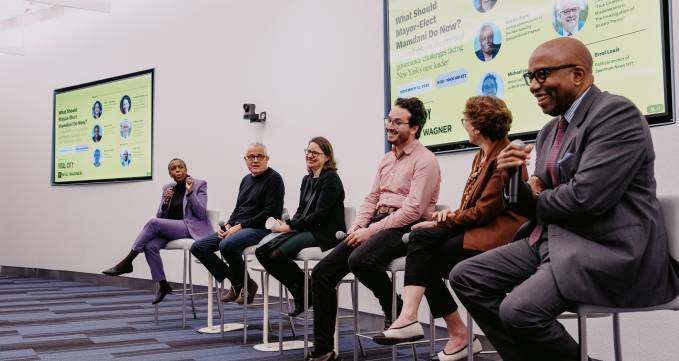What Should Mayor-Elect Mamdani Do Now? Panel with Vital City
After a mayoral election discussed around the world, many are wondering what’s next for New York City and for Mayor-Elect Zohran Mamdani. On Wednesday, November 12, NYU Wagner and Vital City partnered to present a panel of experts to delve into what may lie ahead as Mamdani prepares to take office.
In a packed room in Wagner’s Main Event Space, Errol Louis, political anchor on Spectrum News NY1 moderated the discussion between panelists:
Event: NYC Congestion Pricing is Working. So Why Is It Under Attack?
On February 25, 2025, NYU Wagner partnered with The Century Foundation to present “NYC Congestion Pricing is Working. So Why is it Under Attack?,” a panel discussion featuring prominent experts exploring the initial impact and potential future of New York City’s hotly debated congestion pricing program.
Welcome Reception: Distinguished Visiting Urbanist Iris Weinshall
On January 23, 2025, NYU Wagner welcomed its 2024–25 Distinguished Visiting Urbanist Iris Weinshall with a reception in the Faculty Seminar Room. Weinshall, a Wagner graduate herself, is the chief operating officer of the New York Public Library and has previously served as the vice chancellor of the City University of New York (CUNY) and commissioner of the New York Department of Transportation.




